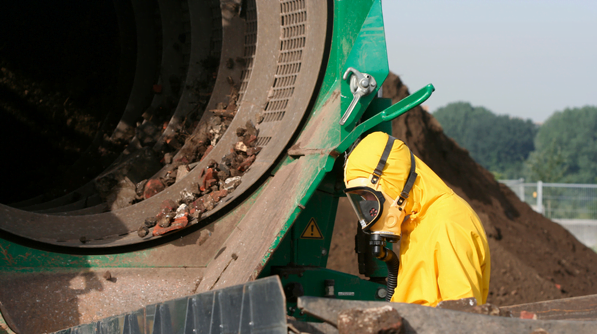You’ve started working your way down the long, winding road of home ownership – you’re viewing houses, starting to get pre-approved for a mortgage, and deciding on where exactly you want to settle down. But moments after stepping foot inside what could be your dream house, there it is; an ominous word that sends shivers down any homebuyer’s spine – Asbestos! Don’t worry, though; we’ve got you covered with this definitive guide to handling asbestos during the home-buying process. Read this post here for all the tips and tricks needed so you can navigate this potentially hazardous situation with ease.

What is Asbestos
Asbestos is a naturally occurring mineral that has been widely used in the construction of buildings due to its high strength and insulating properties. It was once hailed as a versatile wonder material, able to resist heat and fire while offering soundproofing benefits. However, it has since become clear that asbestos fibers are highly toxic when inhaled and can lead to serious health conditions. For this reason, asbestos has been largely phased out of use in the construction industry, and many countries have banned its use altogether. It is still present in older buildings, however, and workers need to be aware of the risks posed by asbestos when undertaking any renovation or demolition work.
The Health risks of Asbestos
Asbestos is a small but dangerous invader of your lungs. Tiny fibers, invisible to the naked eye, become lodged in the tissues and can cause considerable harm over time. These diseases are all linked to prolonged exposure to asbestos fibers.
1. Asbestosis
This is a serious and often deadly condition caused by inhaling airborne asbestos fibers. The fibers can become embedded in the lungs, causing scarring of lung tissue and life-threatening respiratory issues. Symptoms may include shortness of breath, coughing, and chest pains. If left untreated, asbestosis can lead to serious respiratory complications and even death.
2. Pleural Disease
Pleural is an often-misunderstood non-cancerous condition that affects the membrane around our lungs and chest cavity. It can present in a variety of ways – from thickening across the pleura to localized plaques or even fluid build-up near the lungs. While not all those affected will notice any breathing difficulties, some may find their lung function has become less efficient due to this change.
3. Lung Cancer
Lung cancer is a devastating illness that devastates the lungs, blocking pathways and decreasing airflow. Those who smoke tobacco or are exposed to asbestos greatly increase their risk of contracting this deadly disease. Taking preventative measures such as avoiding these substances can help reduce one’s chances significantly – it could be a lifesaver! Find out mastering print-ready artwork
4. Mesothelioma
This is a devastating cancer of the body’s protective membranes that can lie dormant for decades after exposure to asbestos before any signs appear. The long latency period makes this insidious disease all too easy to overlook, often resulting in late detection and far worse outcomes.
How To Remove Asbestos
When it comes to safely removing asbestos, the most important thing to keep in mind is that you should never try and do it yourself. Asbestos can be extremely hazardous when disturbed and, if not removed correctly, can lead to serious health risks, as mentioned above. It’s essential that you hire a professional removal company who are experienced and certified to deal with this type of hazardous material.
Once you’ve chosen your removal company, make sure that they take the necessary safety precautions to protect anyone who will be on or near the site from being exposed to asbestos fibers. This includes wearing protective clothing and respirators, establishing a decontamination zone, and providing appropriate containment materials such as plastic sheeting. The removal process will involve wetting the asbestos down to reduce dust and then carefully removing it.
Finally, after the asbestos has been removed, it is important that your professional contractor follow up with an air monitoring test to ensure no airborne fibers remain. This process should also be repeated once all of the asbestos materials have been removed from the site, to ensure that the area is totally safe for human occupancy and use.
By following this guide, you can ensure that you have taken all the necessary measures to protect both yourself and those around you from potential harm caused by asbestos. Taking the time to properly address any issues with this hazardous material can save lives – don’t hesitate to get professional advice if there is even a small chance that asbestos may be present in your home or workplace.




